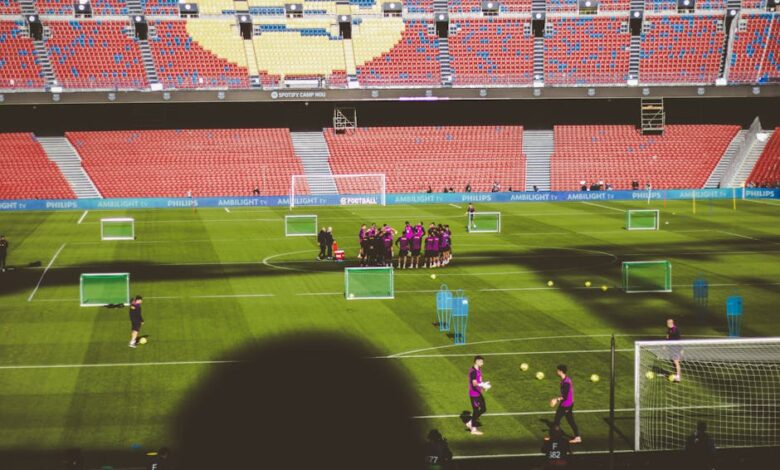The Echoes of a Disallowed Goal: What Happened?

In the high-stakes world of Premier League football, where every decision can swing fortunes, controversy isn’t just a talking point — it’s often the main event. We’ve all been there: glued to the screen, watching a pivotal moment unfold, only for a whistle or a VAR check to completely upend the narrative. And few narratives feel as dramatically altered as those involving Liverpool and a disallowed goal.
The recent complaint lodged by Liverpool with the Professional Game Match Officials Limited (PGMOL) following a controversial disallowed Virgil van Dijk goal has once again thrust officiating standards into the spotlight. The Reds are convinced they were denied a rightful goal at the Etihad, a moment that could have significantly impacted a crucial fixture. But this isn’t just about one incident; it’s about the broader implications for the game, the role of VAR, and the constant quest for consistency and clarity in football officiating.
The Echoes of a Disallowed Goal: What Happened?
At the heart of the matter lies a specific passage of play that, depending on your allegiance, was either a clear infringement or a perfectly legitimate goal. The incident involving Van Dijk saw the ball hit the back of the net, only for celebrations to be cut short by the referee’s whistle and a subsequent VAR review. The crux of Liverpool’s complaint, and indeed the frustration of their fanbase, stems from the belief that the decision to disallow the goal was incorrect – a feeling of being “robbed,” as the common parlance goes.
Typically, disallowed goals often fall into categories: offside, a foul in the build-up, or the ball going out of play. In this instance, the specifics, without getting bogged down in minute details of every angle, revolve around the interpretation of contact and whether it constituted a foul preventing the goal. This isn’t just about a player tripping or pushing; it delves into the nuances of modern football’s physical battles, where intent, impact, and advantage are constantly weighed.
The introduction of VAR was supposed to eliminate “clear and obvious errors,” yet it often seems to create new ones, or at least new debates. What one person sees as a definite foul, another sees as fair game. This subjectivity, amplified by slow-motion replays, means that even with technology, the human element of interpretation remains paramount – and, predictably, controversial.
When VAR Adds to the Confusion
For many fans, VAR was pitched as the ultimate solution for contentious decisions, a technological panacea. In practice, however, it has often added layers of complexity and frustration. The time taken for reviews, the lack of transparent communication during the process, and the differing interpretations by officials sitting in a remote booth all contribute to a sense of disconnect. Instead of a swift, clear resolution, we often get drawn-out pauses that suck the momentum and joy out of the game.
The Van Dijk incident perfectly encapsulates this dilemma. Was it a clear and obvious error by the on-field referee? Or did VAR itself overrule a decision that, in real-time, might have been considered fair? These are the questions that Liverpool, and indeed the wider football community, are asking. The technology is there, but its application and the protocols surrounding it are still very much a work in progress.
PGMOL Under the Microscope: The Quest for Consistency
Liverpool’s complaint isn’t just a knee-jerk reaction to a single match outcome; it’s a formal process that highlights systemic concerns. PGMOL, the body responsible for training, selecting, and appointing referees for Premier League, EFL, and FA Cup matches, is under immense pressure to deliver consistent, high-quality officiating. Every week, their decisions are scrutinised by millions of fans, pundits, and, crucially, by the clubs themselves.
The desire for consistency is perhaps the loudest cry from managers and players. They want to understand the rules and how they will be applied from one game to the next, regardless of the referee in charge. When similar incidents are officiated differently, it erodes trust and fuels accusations of bias, even when none exists. This perceived lack of uniformity makes it incredibly difficult for players to adapt their game and for managers to plan tactics.
Complaints like Liverpool’s serve a vital purpose beyond just expressing dissatisfaction. They provide PGMOL with direct feedback from professional clubs, forcing a review of specific decisions, protocols, and the performance of individual officials. While a single complaint may not overturn a result, it contributes to an ongoing dialogue aimed at raising standards and clarifying interpretations. It’s an essential, albeit sometimes heated, feedback loop in the pursuit of fairness.
The Broader Picture: Integrity of the Game
Beyond individual club grievances, the integrity of the game itself is at stake. When controversial decisions repeatedly influence major results, it can sow seeds of doubt about the fairness of the competition. For a league as competitive and financially lucrative as the Premier League, maintaining that trust is paramount. Every point, every goal, can mean the difference between winning a title, qualifying for Europe, or facing relegation.
Referees have an incredibly tough job, making split-second decisions in high-pressure environments. But as the stakes get higher, so too does the expectation for accuracy. The tools are evolving, but the human element of judgment, and the challenge of standardising that judgment, remains football’s eternal puzzle. The dialogue opened by Liverpool’s complaint is not just about one game; it’s about continually striving for a better, fairer game for everyone involved.
Moving Forward: A Call for Dialogue and Development
So, what’s the path forward? For PGMOL, it involves continuous training, clearer guidelines for VAR implementation, and perhaps more transparent communication with clubs and the public. For clubs like Liverpool, it’s about continuing to advocate for what they believe is right, using established channels to highlight perceived shortcomings. And for fans, it’s about holding onto the passion for the game while also demanding accountability and constant improvement from all stakeholders.
The disallowed Van Dijk goal is more than just a footnote in a fixture; it’s a stark reminder that even with all the technology available, football remains a game of human interpretation and, inevitably, human error. But it’s also a testament to the fact that clubs, in their pursuit of sporting justice, are willing to challenge the system, pushing for greater clarity, consistency, and ultimately, a more equitable game for all. The conversation continues, as it must, because the beautiful game deserves nothing less than the very best efforts from every single person involved.





